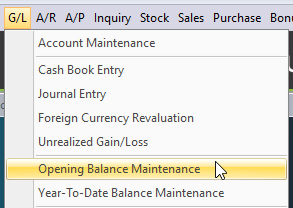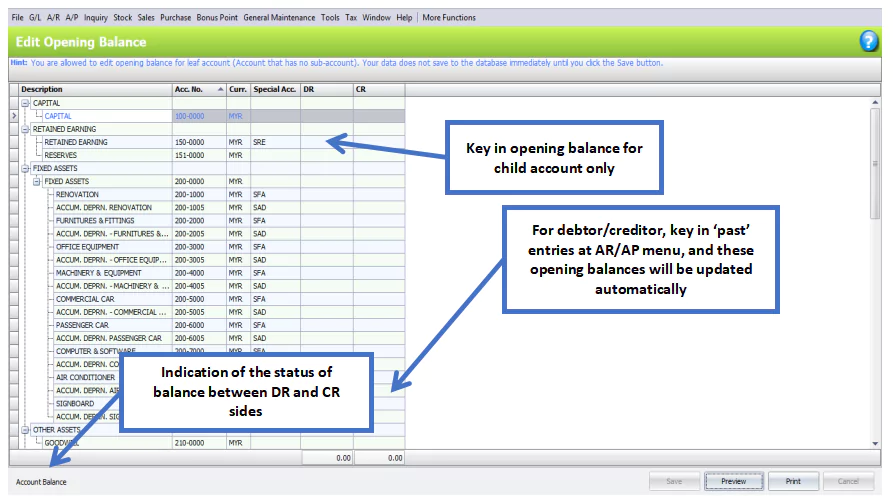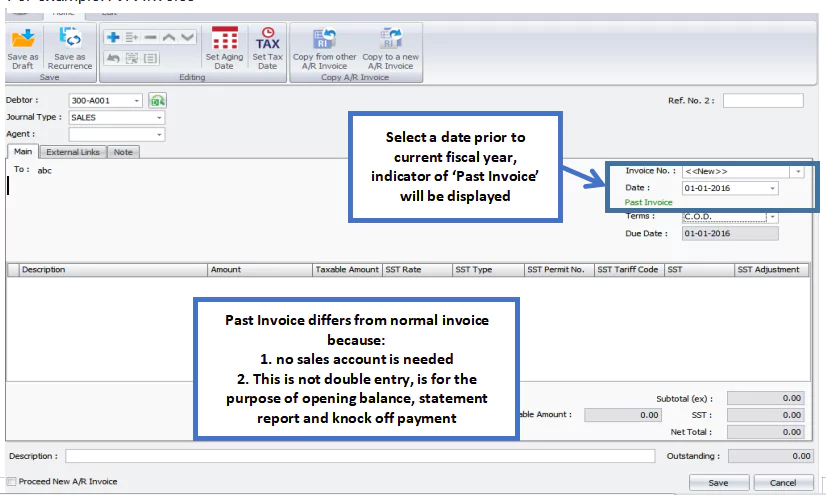Chapter 4 – Opening Balance Maintenance
Chapter 4.1 – Opening Balance Maintenance
Enter the opening balances for the current fiscal year when the Actual Data Start Date is the same as the Start Date of the current fiscal year, go to G/L > Opening Balance Maintenance.


Note
- Enter the balance amount only in child accounts without sub-accounts. The total amount will be automatically filled into their parent account.
- Entering the Balance Sheet Stock value here will update the closing stock value (for the last month of the year prior to the current fiscal year) at G/L > Stock Value Maintenance (provided that the previous fiscal year has been added in Manage Fiscal Year). Be aware that changing the closing stock value for the last month of the year prior to the current fiscal year in Stock Value Maintenance will not update the value in Opening Balance Maintenance.
- It is advisable not to enter opening balances for personal accounts (debtors/creditors) directly here. Instead, add ‘past entries’ at the AR/AP menu to update the debtor/creditor opening balances automatically.
- To allow direct entry of opening balances for debtors/creditors, go to Tools > Manage Fiscal Year, highlight the current fiscal year, and check the checkbox.
- It is not advisable to enter debtor/creditor opening balances in this way because it does not keep a record of entries, so they will not be shown in debtor statements or be available for knock-off payments.
- Go to the AR/AP menu to enter past or YTD entries, such as invoices, credit notes, debit notes, and payments. If you do not want to enter all the outstanding bills one by one, you can just add one past or YTD invoice with the total outstanding balance (one lump sum). The amounts of past/YTD entries will be updated to the opening/YTD balance. If not, go to Tools > Manage Fiscal Year, highlight the current fiscal year, and click the (button name) button.
or
Past Entries
Past entries are A/R or A/P entries (usually invoices, but also including payments, debit notes, and credit notes) that were created prior to the current fiscal year.

